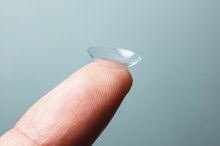How to Correctly Wear a Magnetic Bracelet
Many people find that magnetic bracelets improve their overall health while addressing nagging chronic ailments. There are many different kinds of magnetic bracelets. These simple directions apply to unipole or unidirectional magnetic bracelets, which are most commonly used in magnetic therapy.
If you are experiencing serious medical symptoms, seek emergency treatment immediately.
Using the directions that accompany the magnetic bracelet, identify, which side of the bracelet is "positive" and which is "negative." Typically, therapists encourage people to wear the "negative" side of the magnet right next to the skin.
Bicycle Seat & Nerve Damage
Learn More
Consult your reflexology map, which should include wrist acupressure points. (You can get such a map at a bookstore or library.) Wear your bracelet on the wrist that contains the pressure points you would like to affect. If you are having back pain, for example, you want to wear the bracelet on your left wrist, because the acupressure points for the spine are nearby. If you are suffer from gastrointestinal problems, you want to wear your bracelet on your right wrist.
Place the bracelet on your wrist. If your bracelet allows you to tighten it, do so to your comfort level.
How to Assemble a Blood Pressure Cuff
Learn More
Remove your bracelet(s) when showering, bathing or engaging in any activity that would cause it to be submerged. This protects your bracelet from damage or soap-scum buildup.
Know that wearing your bracelet(s) overnight is optional. Most therapists recommend that patients start by wearing the bracelets during the day only. If you are not achieving the desired results, try wearing the bracelet(s) overnight.
Tips
These directions apply to unipole or unidirectional magnetic bracelets, which are most commonly used in magnetic therapy. If you are using a different type of magnetic bracelet, talk to a professional therapist about magnet placement.
Warnings
If you are pregnant or wearing a pacemaker, do not use magnetic bracelets.
Wearing magnetic bracelets should also be avoided when you are using an electronic device, like a heating pad.
Related Articles
References
- Edlich RF, Cochran AA, Greene JA, Woode DR, Gubler KD, Long WB. Advances in the treatment of peanut allergy: a case report. J Emerg Med. 2011;40(6):633-6. doi:10.1016/j.jemermed.2008.01.028
- Rahman S, Walker D, Sultan P. Medical identification or alert jewellery: an opportunity to save lives or an unreliable hindrance?. Anaesthesia. 2017;72(9):1139–1145. doi:10.1111/anae.13958
- Lauren's Hope. About Lauren's Hope.
- AllerMates. Our story.
- MedicAlert Foundation. Who we are.
- MedicAlert Foundation. Global services (everybody).
- N-Style ID. About us.
Tips
- These directions apply to unipole or unidirectional magnetic bracelets, which are most commonly used in magnetic therapy. If you are using a different type of magnetic bracelet, talk to a professional therapist about magnet placement.
Warnings
- If you are pregnant or wearing a pacemaker, do not use magnetic bracelets. Wearing magnetic bracelets should also be avoided when you are using an electronic device, like a heating pad.
Writer Bio
Elizabeth Anne is a freelance journalist based out of Kansas City, Mo. She specializes in health and medical writing. Her work has been published in The Dallas Morning News, Betters Homes and Gardens Special Interest Publications and the About.com health pages.









